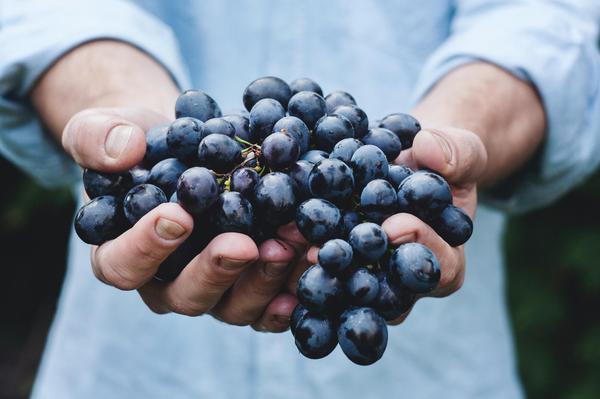The Journey of Georgian Wine
Georgia's 8,000-year-old wine-making history is a testament to the country's rich culture. This article will explore the journey of Georgian wine from qvevri to bottle.
The Traditional Winemaking Method
Georgian winemaking has a long and rich history, and one of the most unique and traditional methods is the use of qvevri. These clay vessels are buried in the ground and used for fermentation and aging of wine. The grapes, including skins, stems, and seeds, are placed in the qvevri, and the natural yeast on the grapes starts the fermentation process. The wine is then left to age in the qvevri, which can be buried for years. The traditional method produces a range of wines, including whites, reds, and amber wines, which are unique to Georgia.
Modern Winemaking Techniques
Modern winemaking techniques in Georgia have evolved over the years, alongside the traditional method. While some wineries still use qvevri, others have adapted to modern equipment and techniques, such as stainless steel tanks, to produce wine. This allows winemakers to have more control over the fermentation process and produce wines with more consistent flavor profiles. Modern techniques also enable winemakers to experiment with different grape varieties and blends, resulting in a wider range of wine styles. Some of the wines produced using modern techniques include international varieties like Chardonnay and Cabernet Sauvignon, as well as unique Georgian blends.
Grape Harvesting and Sorting
Georgia's grape harvest season typically begins in September and can last until November. The traditional method of grape harvesting involves handpicking the grapes and placing them into baskets. The grape varieties grown in Georgia are unique and diverse, with over 500 indigenous varieties. After harvesting, the grapes undergo a rigorous sorting process to remove any damaged or underripe grapes, which can affect the quality of the wine. Sorting is an important step in ensuring that only the best grapes are used in winemaking.
Fermentation and Aging
Georgian winemaking uses a unique fermentation process involving the use of qvevri, large clay vessels buried underground. After the grapes are crushed and pressed, the juice and skins are poured into the qvevri and allowed to ferment for several months. After fermentation, the wine is then aged in qvevri or oak barrels for a period of time, which can vary depending on the type of wine. The aging process helps to enhance the flavor and quality of the wine, and can give Georgian wine a distinct taste that sets it apart from other wines around the world.
Bottling and Labeling
After the aging process is complete, the wine is ready to be bottled. In Georgian winemaking, the bottles used are often distinctive in shape, with a slightly tapered neck and a rounded body. The bottles are then labeled with information about the wine, including the grape variety, region of origin, and vintage. Georgian wine labels often feature colorful, intricate designs that reflect the country's rich cultural heritage. Accurate labeling is crucial for promoting Georgian wine, as it allows consumers to understand the unique qualities and characteristics of each wine.
Wine Export and Promotion
Georgia's wine export industry has been growing rapidly in recent years, with countries such as Russia, China, and the United States showing increased demand for Georgian wine. The Georgian government has been actively promoting the country's wine industry through various initiatives, including the establishment of the National Wine Agency and the Wine Museum in Tbilisi. The promotion of Georgian wine not only boosts the country's economy but also preserves the unique winemaking heritage of Georgia for generations to come.
Conclusion
In conclusion, Georgian winemaking has a rich history and a unique set of traditions and techniques that set it apart from other wine-producing countries. From the traditional method of using qvevri to the modern techniques of stainless steel tanks, Georgian winemakers continue to innovate while preserving their heritage. In addition to exporting wine globally, Georgia has also become a popular destination for wine tourism, with travel and tour companies offering experiences that allow visitors to explore the country's wine regions and learn about its winemaking culture. As the global demand for Georgian wine continues to grow, it is important to preserve and promote this treasured aspect of the country's cultural heritage.


 Methods of Georgian Winemaking
Methods of Georgian Winemaking
 Qvevri
Qvevri
 Georgian Ancient Winemaking
Georgian Ancient Winemaking
 UNESCO-Listed Qvevri Wine-Making
UNESCO-Listed Qvevri Wine-Making
 Soviet Impact on Georgian Winemaking
Soviet Impact on Georgian Winemaking
 The Renaissance of Georgian Winemaking in the Post-Soviet Era
The Renaissance of Georgian Winemaking in the Post-Soviet Era
 Wine Bottling and Storage
Wine Bottling and Storage
 Qvevri Wine Fermentation Process
Qvevri Wine Fermentation Process
 Wild Yeasts in Georgian Winemaking
Wild Yeasts in Georgian Winemaking
 Influence of Terroir on Georgian Winemaking
Influence of Terroir on Georgian Winemaking










